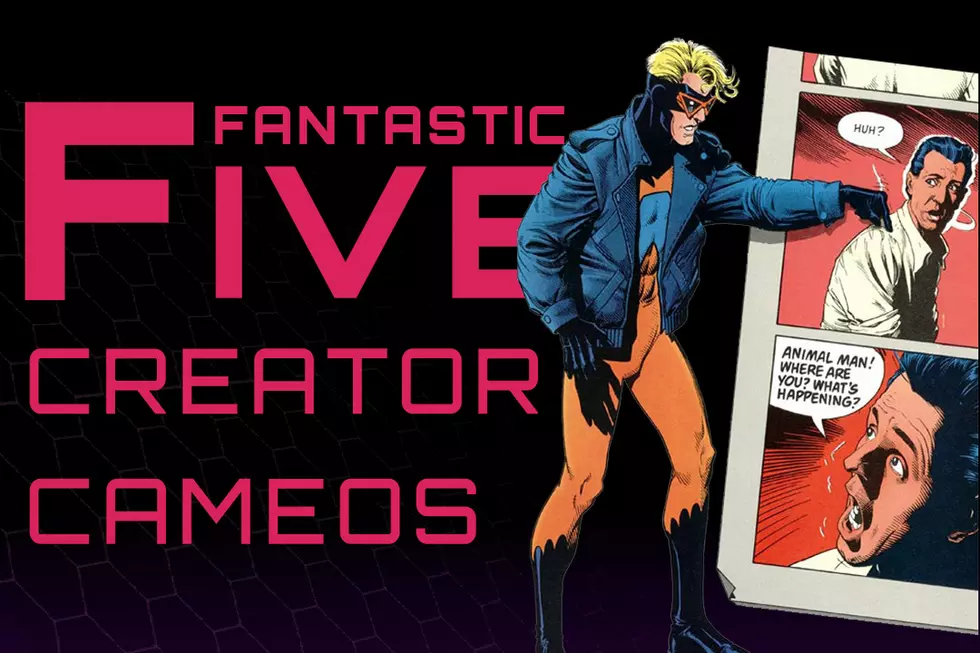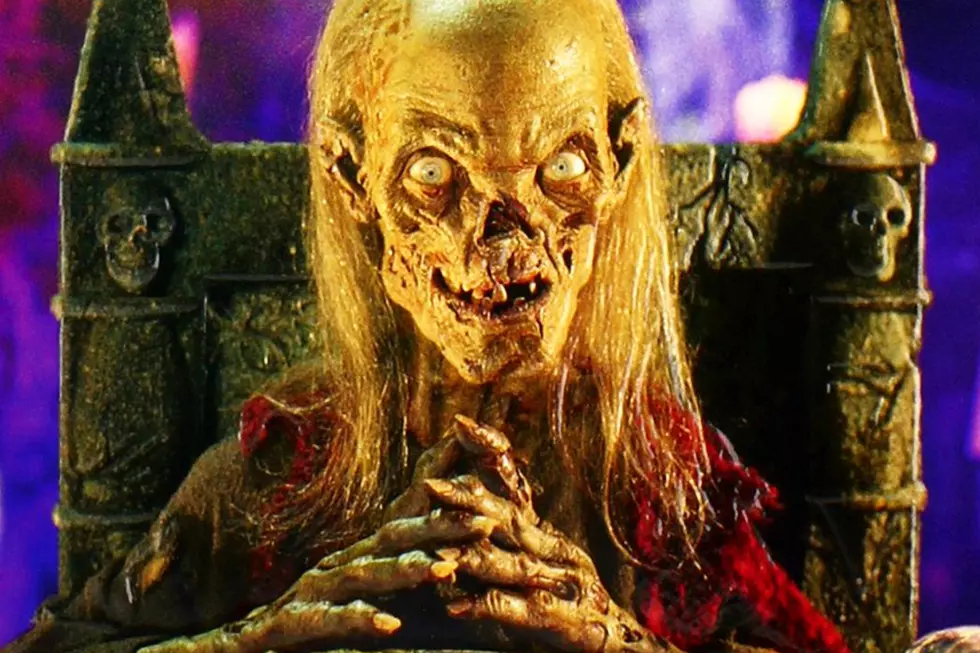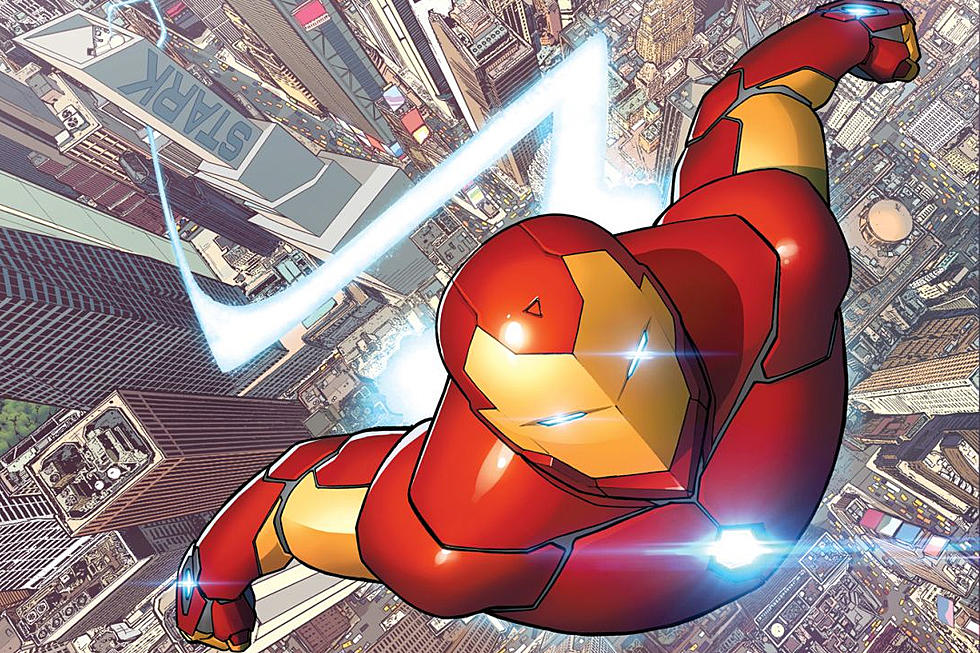
61 Years Ago Today: The Comics Code Authority Changed The Face of Comics
The Comics Code Seal of Approval, adopted on this day on 1954 by the Comics Magazine Association of America, is an instantly recognizable image to generations of comic readers. Its modest black-and-white brand adorned the covers of countless mainstream comic books for the better part of six decades, assuring buyers that the contents of their favorite title had met with some not-entirely-clear standards of suitability, and serving as a lingering reminder of an era when comics has been considered a serious threat to society.
The story of the Code begins in the early 1950s, an all-around tough time for the comics industry. The superhero boom of the 1940s had waned, two major companies were engaged in a seemingly endless copyright infringement lawsuit, and publishers were experimenting with different genres, expanding their lines further into directions of western, science fiction, humor, romance, and finding particular success with a selection of horror and "true crime" titles.
Led by Lev Gleason's Crime Does Not Pay and E.C.'s "trio of terror" (Tales From The Crypt, The Haunt Of Fear, and The Vault Of Horror), these series grew more intense and graphic with each issue, inspiring passionate devotion among fans, and sparking concern among parents and cultural critics, who feared the effects that such stories could have on impressionable young minds.
Foremost among comics' detractors was one Fredric Wertham, a Harlem-based psychologist whose proclamations that comics were corrupting America's youth would lead to widespread condemnation of the medium. His campaign against comics fit nicely with the tenor of the times, and between a sensationalist "Do Comics Create Criminals?" article in a 1953 issue of Ladies' Home Journal and the 1954 publication of his opus Seduction Of The Innocent, he fanned the flames of cold war paranoia and became the public face of a burgeoning anti-comic movement.
Wertham's crusade fit perfectly alongside the fear-mongering that consumed the country at that moment in time: the House Committee on Un-American Activities' multiple investigations of Hollywood, and the accompanying waves of anti-communist hysteria; the sudden shift in social constructs and rise of "teenage" culture; the lingering shadow of the atom bomb; the Brown v. Board Of Education decision on the integration of public schools; and the publication of Alfred Kinsey's books on sexual behavior; all provided plenty of openings for opportunistic moralists to stir up concern and look for scapegoats. Once the US Senate established a subcommittee to investigate juvenile delinquency, it was just a matter of time before comics had their moment in the crosshairs.
Over the spring and summer of 1954, the Senate Subcommittee on Juvenile Delinquency held hearings on comics in New York City. Faced with a rising tide of public concern, publishers decided that action had to be taken, so that September they formed the Comics Magazine Association Of America, a trade group consisting of all the major comics companies --- save Dell / Western Publishing, who produced mostly all-ages and licensed titles, and were largely immune to criticism.
The new organization's first order of business was to reassure parents and lawmakers that they were producing a polite, suitably all-American product. To that end, they created a stringent set of standards and ethics to govern their publications, and a regulatory body to enforce said restrictions.
On October 26th, 1954, the Comics Code was officially adopted, and the landscape of the industry was changed forever.
All use of the words "horror" or "terror" in titles was banned; any depictions of werewolves, vampires, ghouls, cannibalism, and "walking dead" were strictly prohibited; government officials, public servants, and respected institutions were no longer allowed to be presented in a fashion that "create disrespect for established authority"; romance stories were required to emphasize the sanctity of marriage; and so on and so on.
In short, rather than facing the possibility of attacks from outside forces, comics companies had chosen to create an incredibly restrictive engine of self-censorship that may have assured the industry's continued survival, but also enforced a draconian (and seemingly arbitrary) set of puritanical guidelines. And while the CCA did not technically have legal power to enforce its guidelines, it was made clear that it would work closely with comic distributors to ensure that approved titles received preferential treatment.
The code's enactment had a number of immediate effects. EC Comics, after a short-lived attempt at creating a new slate of toned-down titles, cancelled the bulk of their line and transformed Mad into a full-size magazine that wouldn't be subject to the Code's interference. Archie continued more or less as before. Timely/Atlas launched a short-lived revival of some of their superhero characters, in an attempt to fill the gaps left by their now-defunct horror titles. Many smaller publishers folded entirely, and those that remained got used to having their titles picked apart by the Code's heavy-handed team.
The CCA's demands were numerous and notable, and not terribly consistent --- necklines were raised, expressions and faces were altered (in order to be less "gruesome"), weapons were erased in the midst of fight scenes, captions were rewritten --- all these changes were enacted at the whim of the Code's censors, with no reliable system in place for discussion or appeal.
Some publishers followed EC's lead and experimented with formats that weren't subject to CCA oversight, such as Warren's line of black-and-white horror magazines. The underground comic movement of the late '60s was built on alternative distribution methods that circumvented traditional newsstands. But for the most part, the Code maintained absolute authority over the industry until 1971, when a publisher would actually challenge one of its rulings.
Stan Lee had written a three-part Spider-Man story (at the behest of the US Government's Department of Health Education and Welfare) that addressed the dangers of drug abuse, and upon submission to the CCA, the issues were summarily rejected. Lee argued the point, making clear that this was a story that in no way glorified drugs, and pointing out the involvement of the US Government, but the Code stood behind their initial decision.
So Lee went to Martin Goodman, Marvel's publisher, and convinced him to release the three issues (Amazing Spider-Man #96-98) without the Comic Code seal of approval. The ensuing hoopla and positive publicity led to the first major changes in Standards since the Code was instituted, an event that had wide-ranging repercussions and signaled that the CCA might not be as all-powerful as it had previously seemed. The revised Code allowed publishers more freedom to address mature topics, and opened the door to once again tell stories that featured horror elements.
In the years that followed, the Code hung around, but with steadily decreasing power and impact. The rise of direct market distribution for comic shops in the '70s led to an increase in the number of small publishers who didn't feel bound to the CCA's restrictions, and mainstream companies pushed the envelope ever-farther in terms of content and presentation.
The Code also became a topic of joking and derision among a new generation of creators, who delighted in seeing what they could sneak past the censors --- most famously when Jim Starlin and Al Milgrom revised the seal to read "Cosmic Code Authority" on a 1975 issue of Strange Tales.
By the '80s, both DC and Marvel regularly released titles without the CCA seal, and the Code was again revised and its restrictions lessened. In 2001, Marvel dropped the Code entirely, followed by DC and finally Archie in 2011, which signaled the demise of the organization.
The rights to the Code's iconic logo now reside with the Comic Book Legal Defense Fund, an organization devoted to fighting censorship of comics when and wherever it might be found. Today's publishers and creators are able to rely entirely on their own best judgement on what's appropriate for their stories and their audience, and are free to regulate themselves.
More From ComicsAlliance









